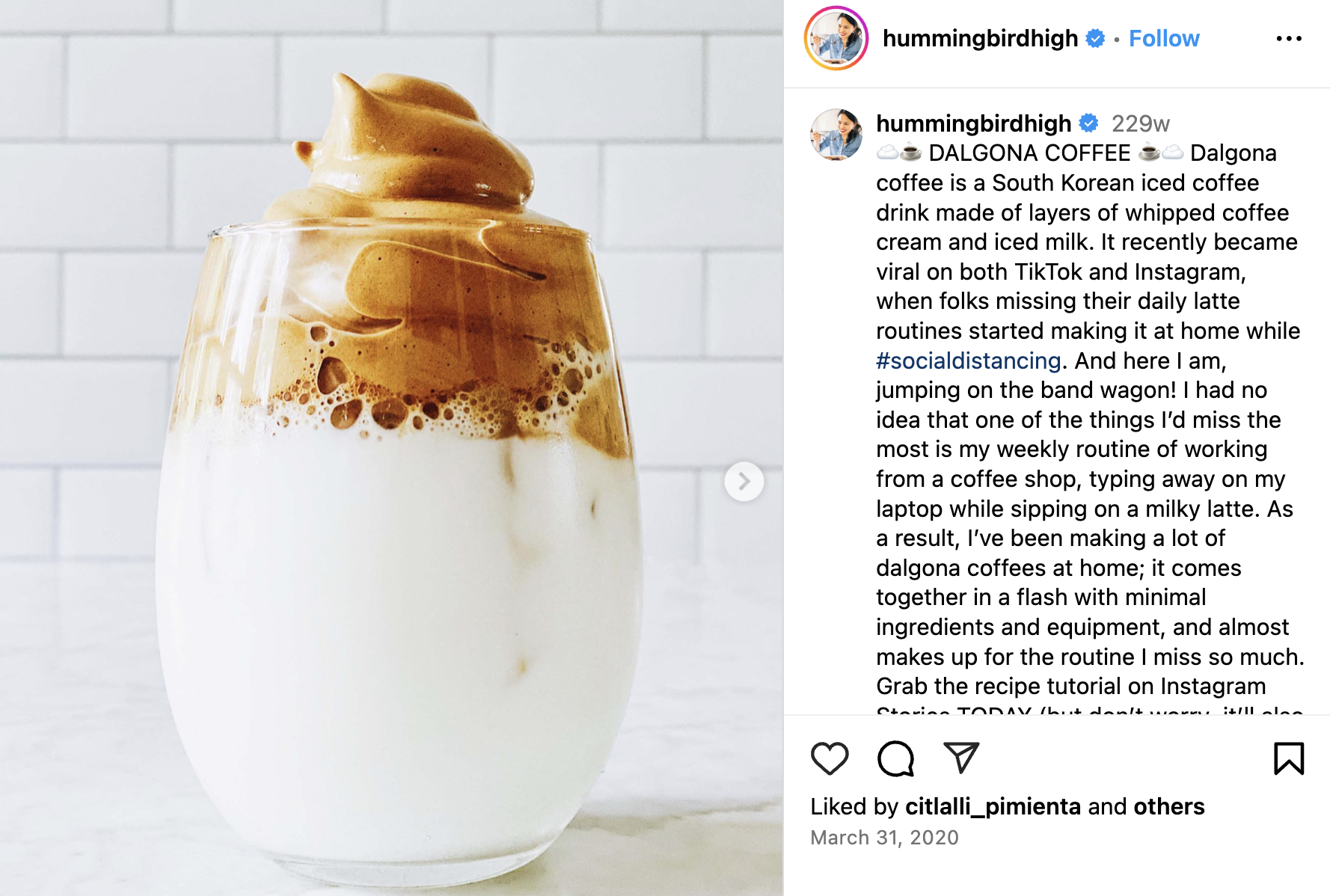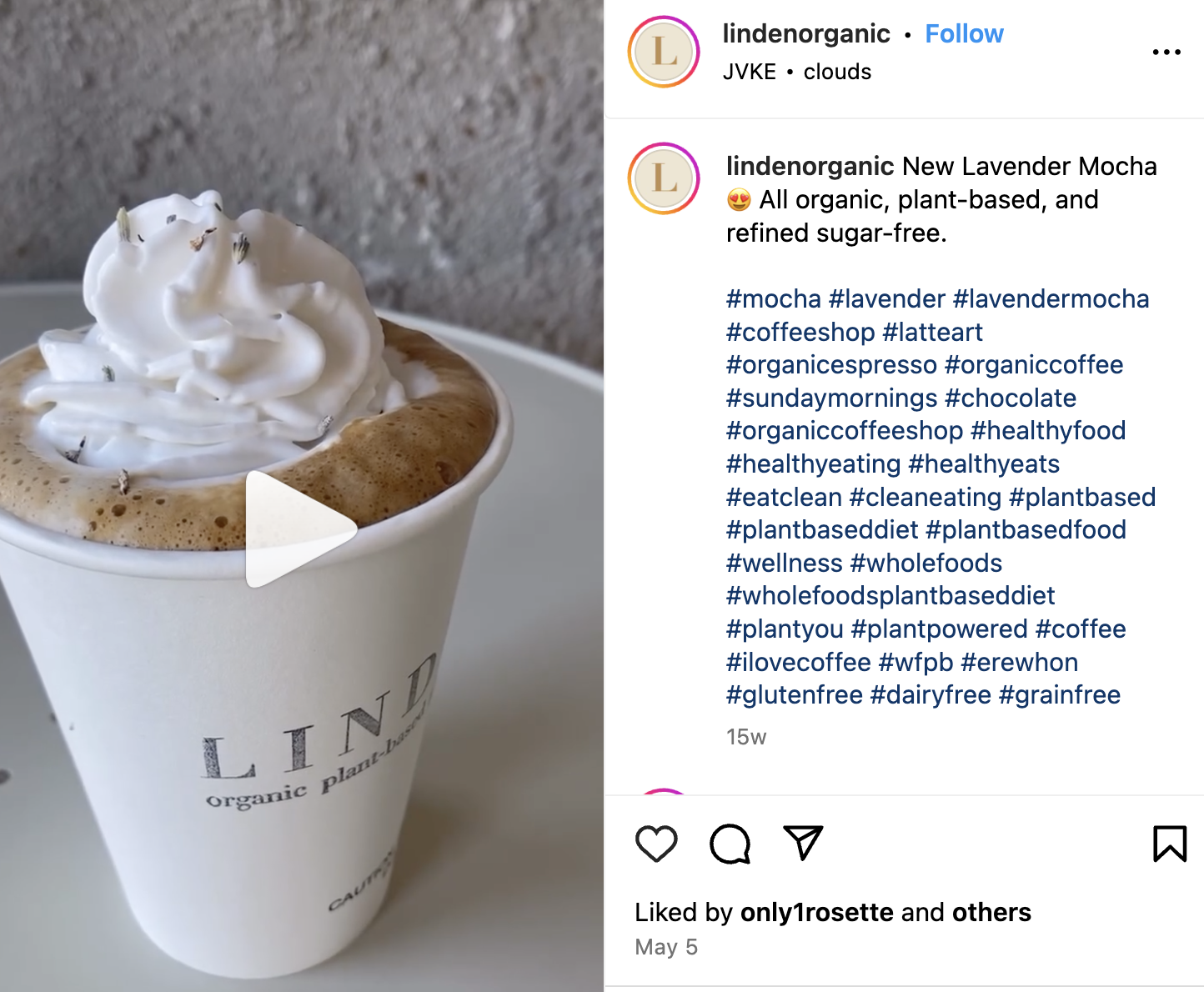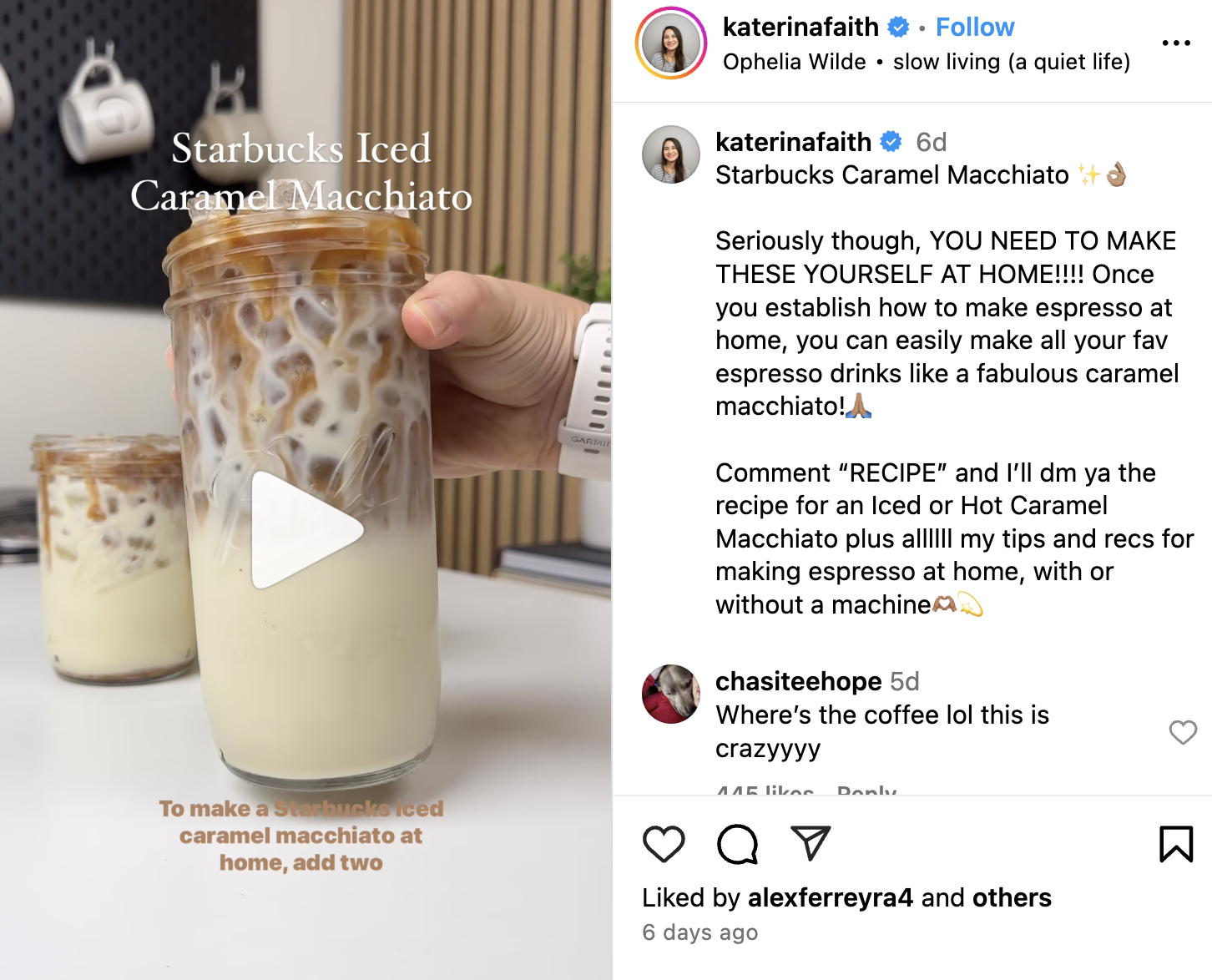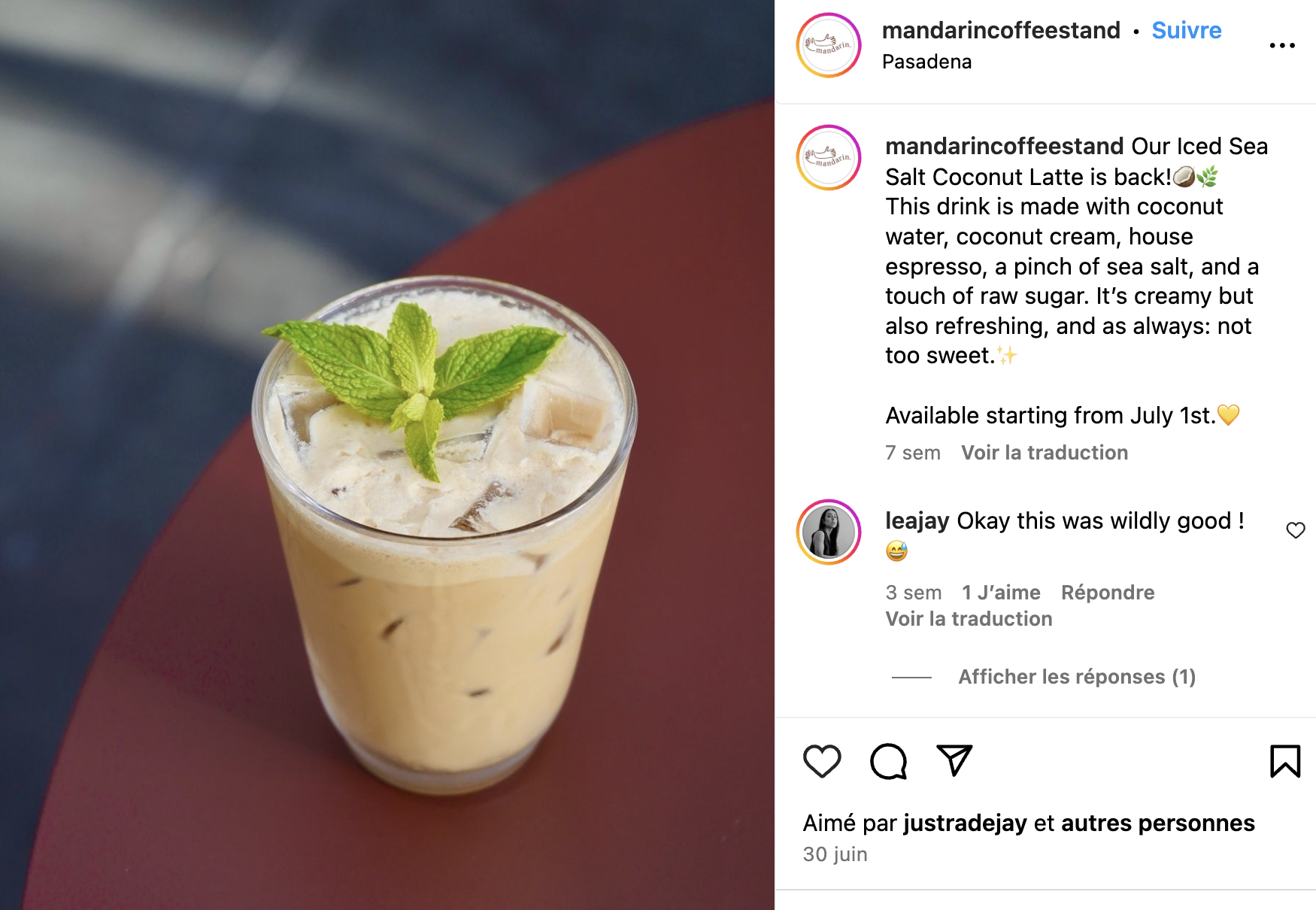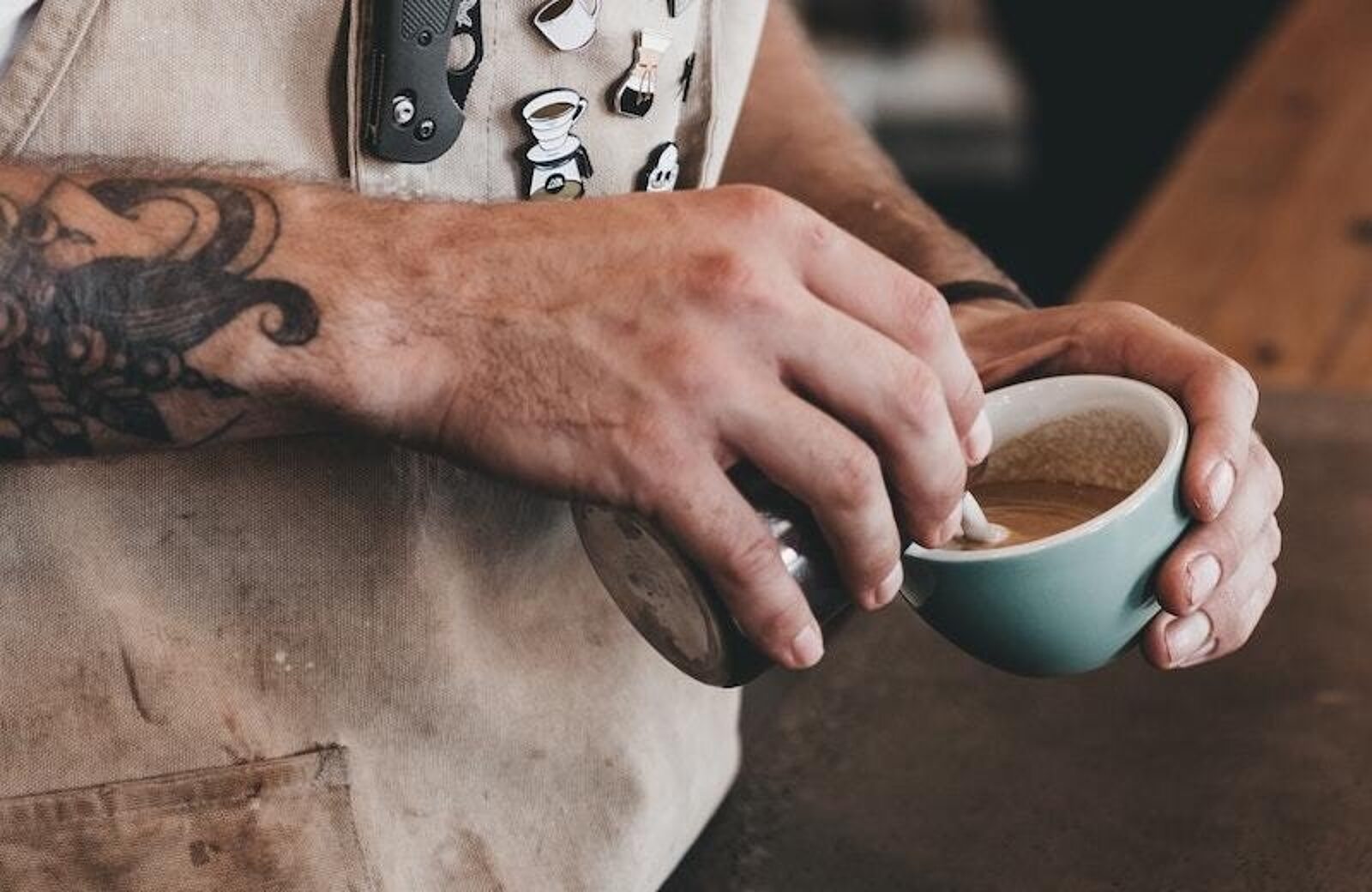
Coffee Shop Recipes: How to Develop Coffee Shop Recipes [2024]
Here is everything you need to develop your coffee shop recipes, from research and development to testing and scaling.
Aidan ToborAuthor
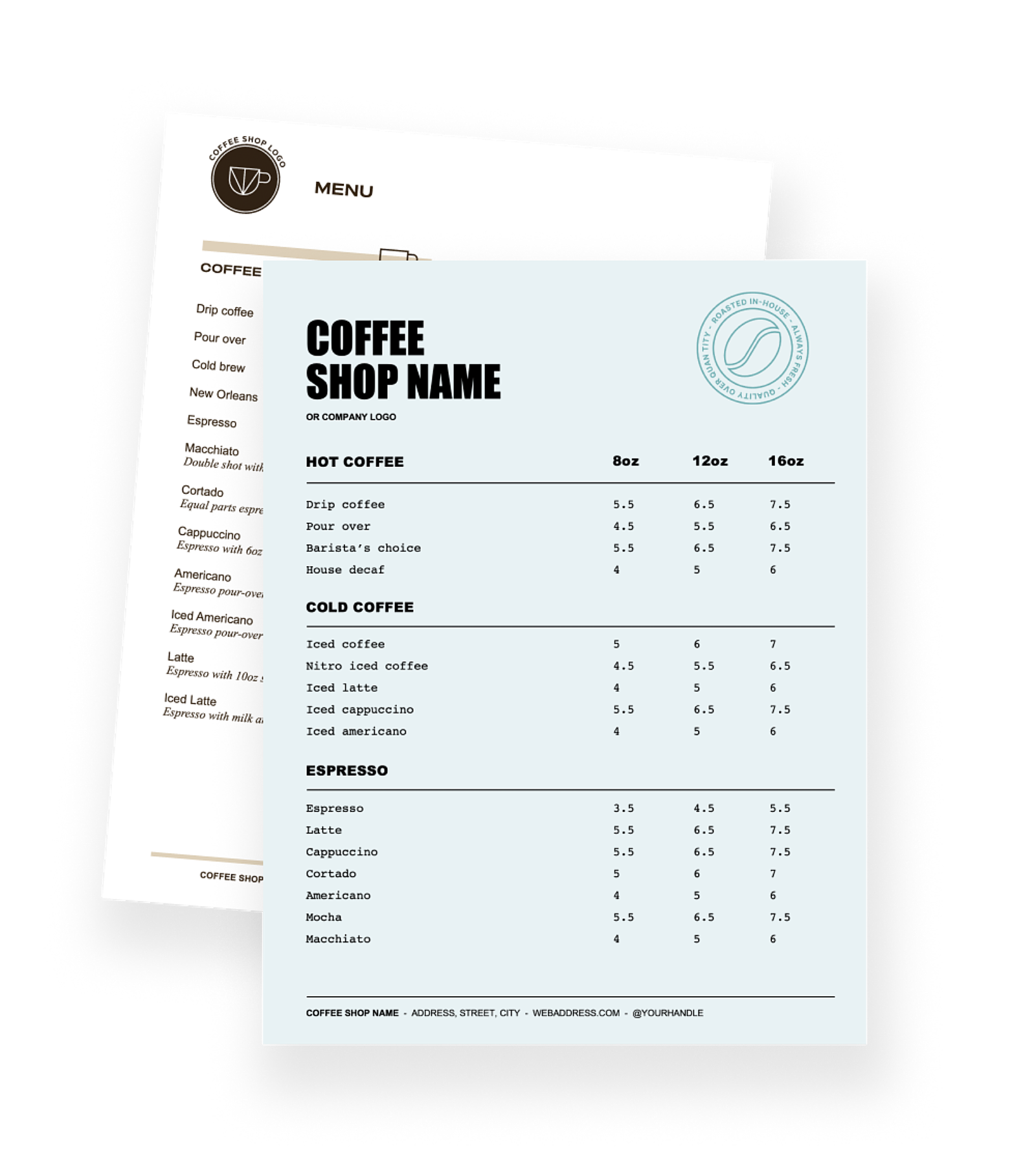

Coffee Shop Menu Templates
Use these coffee shop menu templates as a starting point for your menu design or to give your menu a refresh.
Get free downloadCoffee shops have become an integral part of modern culture, offering a diverse array of beverages that cater to various tastes and preferences. According to Grand View Research, the global coffee market size was estimated at USD 461.25 billion in 2022 and is expected to expand at a compound annual growth rate (CAGR) of 5.2% from 2023 to 2030. Driven by increasing global demand and evolving consumer preferences, this growth provides an opportunity for coffee shop owners to develop new offerings, attract new customers, and tap into a thriving market.
From classic espresso drinks to innovative coffee recipes, coffee shops have evolved to meet the ever-changing demands of coffee enthusiasts.
This guide will help aspiring coffee shop owners and baristas develop standout recipes tailored specifically for a coffee shop setting, ensuring both creativity and consistency in their offerings.
Barista Training Checklist
Use this checklist to help streamline your barista training process and ensure that your new baristas get off to a great start.

Steps to Developing Your Coffee Shop Recipes
1. Research and Inspiration
Creating exceptional coffee shop recipes begins with thorough research and abundant inspiration.
Explore Coffee Trends and Popular Flavors
Stay updated on coffee trends and popular flavors by subscribing to industry reports and publications. Explore how these trends can be adapted to coffee shop classics. For example, consider incorporating unique ingredients like oat milk or brown sugar syrup into latte recipes or creating seasonal specials like the ever-popular pumpkin spiced latte.
Take inspiration from Black Oak Coffee Roasters located in Healdsburg, CA. They serve fun seasonal drinks such as Pumpkin Lattes, Gingerbread Orange Cardamom Lattes, and Horchata Lattes.
Visit Local Coffee Shops and Roasters
Spend time at local coffee shops to understand what makes them successful. Observe the best-selling items, customer preferences, and unique twists on traditional recipes. Take note of the presentation, brewing methods, and flavor combinations. Additionally, visit coffee roasteries to discover high-quality beans that can inspire new drink recipes and seasonal specials.
Follow Coffee-Focused Blogs and Social Media Influencers
Follow blogs and social media influencers who specialize in coffee culture. Platforms like Instagram and Pinterest can provide visual inspiration and highlight emerging trends in coffee drinks. Look for innovative takes on classic beverages, such as dalgona coffee (whipped coffee) variations or creative uses for cold brew in drink recipes.
Check out this dalgona coffee treat whipped up by baker, blogger, and photographer Michelle Lopez of Hummingbird High.
Attend Coffee Festivals and Barista Competitions
Coffee festivals and barista competitions showcase innovative techniques and provide networking opportunities with industry professionals. Attend these events to gather new ideas and insights into potential menu items for your coffee shop. For example, a latte art competition might inspire new presentation techniques for your cappuccinos and flat whites.
2. Defining Your Coffee Shop Concept
A clear and distinct concept is essential for developing a cohesive menu.
Identify Your Target Market and Their Preferences
Determine the demographics of your target market. Are they students looking for a study space with iced coffee, professionals seeking their morning espresso fix, or coffee enthusiasts craving artisanal pour-overs? Understanding your customers will help you tailor your menu to their tastes and preferences.
Choose a Specific Coffee Style or Fusion of Styles
Decide whether your coffee shop will focus on Italian espresso drinks, French press coffees, or a fusion of international styles. For instance, you might blend traditional espresso-based drinks with innovative cold brew creations, offering everything from classic cappuccinos to trendy iced mocha frappes.
Determine Your Unique Selling Proposition (USP)
Identify what sets your coffee shop apart. This could be a signature latte recipe, house-made syrups, or a specific bean-sourcing method. Your USP should resonate with your target market and reflect in your recipes. For example, a coffee shop might be known for its artisanal roasting process or its use of organic, fair-trade beans.
Committed to innovation and equitable direct trade, co-founder of Verve Coffee Roasters Colby Barr shared with coffee publication Sprudge, “We’re definitely an ambitious crew, but what’s next for Verve is pretty much more of what we already do: find the best coffees in the world, roast them in our style, and serve them to people with smiles, whether it be to our amazing wholesale partners or in our own cafes.”
Consider Dietary Needs and Preferences
Modern coffee shops often cater to various dietary needs. Include options for alternative milks like oat and almond, sugar-free sweeteners, and vegan-friendly ingredients. Offering a variety of options ensures that all customers feel welcome and can find something they enjoy, from a classic whole milk latte to a dairy-free hazelnut mocha.
Linden Organic, located in Gilbert, AZ, offers an organic, plant-based, and refined sugar-free Lavender Mocha.
3. Brainstorming and Initial Recipe Ideas
With your concept in mind, start brainstorming and generating initial recipe ideas.
List Potential Coffee Drinks That Fit Your Concept
Create a list of coffee drinks that align with your shop's theme. Think about classic staples like espresso, latte, cappuccino, and Americano, and consider how you can put a unique twist on them. For instance, a shop focusing on indulgent treats might offer a range of dessert-inspired drinks, from white chocolate mochas to caramel macchiatos topped with whipped cream.
Phoenix-based blogger Katerina Faith is passionate about cooking and crafting coffee shop-quality drinks at home, like this Starbucks Caramel Macchiato recreation.
Consider Seasonal Ingredients and Flavor Combinations
Incorporate seasonal ingredients and flavors to keep your menu exciting. This approach can also inspire seasonal specials that customers look forward to. For example, a summer menu might feature refreshing iced coffee recipes and fruity cold brews, while a winter menu could highlight comforting drinks like peppermint mochas and gingerbread lattes.
Think About Menu Diversity
A well-rounded coffee shop menu should include a variety of options, including hot and cold drinks, caffeine-free alternatives, and complementary food items. This diversity caters to different tastes and times of day. Ensure that you have options for various preferences, from strong espresso drinks for coffee purists to sweeter, flavored options for those with a sweet tooth.
4. Recipe Development Process
Developing recipes involves a detailed and iterative process.
Start with Basic Versions of Each Coffee Drink
Begin with simple, basic versions of your coffee drinks. Focus on nailing the fundamental flavors and techniques before experimenting with more complex variations. For example, start with a classic latte recipe before adding unique flavors or elaborate toppings.
Experiment with Different Ingredients and Brewing Methods
Test different ingredients and brewing methods to enhance your creations. For example, try various types of espresso beans for your shots, or different brewing times for your cold brew coffee. Experiment with milk texturing techniques to achieve the perfect microfoam for your cappuccinos and flat whites.
Recipe Card Template
Train your team with this recipe card template, a customizable Excel sheet that outlines recipe requirements for chefs and back of house staff.

Focus on Balancing Flavors, Textures, and Presentation
Strive for a balance of flavors (bitter, sweet, acidic), textures (smooth, creamy, frothy), and presentation (classic, artistic, to-go). A visually appealing coffee drink with a well-rounded taste profile will leave a lasting impression. For instance, a well-crafted macchiato should have a perfect balance of strong espresso and velvety steamed milk, topped with a delicate pattern of latte art.
Keep Portion Sizes and Pricing in Mind
Ensure your drink sizes are appropriate and pricing is competitive. Coffee shops should offer good value, so finding this balance is crucial. Analyze your costs and set prices that ensure profitability while providing value to customers, whether it's for a simple shot of espresso or an elaborate frappé.
5. Testing and Refining Recipes
Testing and refining your recipes ensures they meet high standards.
Conduct Taste Tests with Friends, Family, and Potential Customers
Invite friends, family, and potential customers to taste your coffee drinks. Create a feedback form to gather specific comments and overall satisfaction for each item, from your signature espresso blend to your latest iced coffee creation. Their feedback can provide valuable insights into what works and what needs improvement.
Gather Feedback on Flavor, Temperature, and Overall Appeal
Collect detailed feedback on the flavor, temperature, and overall appeal of each coffee drink. This information is essential for making necessary adjustments. Pay attention to recurring comments and be willing to make changes based on the feedback received, whether it's adjusting the strength of your espresso or the sweetness of your flavored syrups.
Make Adjustments Based on Feedback and Retest
Use the feedback to refine your recipes and retest them. This iterative process helps in achieving the perfect balance of taste and quality. For example, if testers find a mocha too sweet, adjust the chocolate syrup to espresso ratio and retest until it reaches the desired flavor profile.
Ensure Consistency in Taste and Quality
Consistency is key to building a loyal customer base. Ensure that every cup of coffee meets the same high standards. Develop standardized recipes and train your baristas to follow them precisely, ensuring that each drink is prepared and presented consistently, whether it's a simple Americano or a complex seasonal latte.
6. Sourcing Ingredients
High-quality ingredients are the backbone of great coffee shop recipes.
Find Reliable Suppliers for Fresh and High-Quality Coffee Beans
Establish relationships with reliable coffee roasters who can provide fresh, high-quality beans consistently. Look for suppliers who share your commitment to quality and can deliver on time. This is particularly important for your espresso blends and single-origin offerings.
Build Relationships with Local Dairy Farms and Alternative Milk Producers
Supporting local dairy farms and alternative milk producers not only ensures fresh ingredients but also fosters community connections. This can be especially beneficial for sourcing high-quality milk for your lattes and cappuccinos, as well as alternative options like oat milk for dairy-free customers.
Consider Cost-Effective Options Without Compromising Quality
While quality is paramount, it's important to find cost-effective options. Bulk purchasing and negotiating with suppliers can help manage costs. Consider working with multiple suppliers to find the best prices without compromising on quality. For example, you might source your coffee beans from one roaster and your flavored syrups from another to ensure the best quality-to-price ratio.
Plan for Ingredient Availability and Seasonality
Plan your menu around the availability and seasonality of certain ingredients to maintain quality and keep costs manageable. Create a seasonal menu that highlights special flavors and ingredients. This might include offering a pumpkin spice latte only during the fall season or featuring a refreshing lavender iced latte in the summer.
For example, Mandarin Coffee Stand in Pasadena, CA, offers their Iced Sea Salt Coconut Latte in the summer months when customers crave cool, refreshing, and not-too-sweet drinks.
7. Scaling Recipes for a Coffee Shop
Scaling recipes for a coffee shop setting requires careful planning.
Adjust Recipe Quantities for High-Volume Service
Modify your recipes to accommodate high-volume service, ensuring that the taste and quality remain consistent. Use precise measurements and scaling techniques to maintain the integrity of each drink. This is particularly important for items like cold brew coffee, which is often prepared in large batches.
Ensure Consistency in Taste and Presentation for Every Drink
Develop a standardized process for preparing and presenting each coffee drink to maintain consistency in taste and appearance. Create detailed recipe cards and training materials for your baristas to follow. This might include specific instructions on how to pull the perfect shot of espresso or how to create latte art.
Develop a System for Efficient Drink Preparation
Create an efficient drink preparation system that allows for quick service without compromising quality. This might include setting up your espresso machine and coffee grinders for optimal workflow, pre-batching certain components like simple syrups or cold brew, and streamlining your processes to handle peak times effectively.
Consider Equipment and Space Limitations
Be mindful of equipment and space limitations. Optimize your coffee bar layout to ensure smooth operations and efficient service. Invest in high-quality espresso machines, grinders, and other necessary equipment. This might include having dedicated stations for hot and cold drink preparation or investing in a high-capacity cold brew system.
Bring Joy to Your Coffee Shop Recipes
Developing coffee shop recipes is an art that combines a passion for coffee, technical skills, and business acumen. By following this comprehensive guide, you can create a menu of delicious, innovative coffee drinks that will satisfy even the most discerning coffee lovers and set your establishment apart. Remember that the key to success lies in continuous improvement and adaptation to customer preferences and market trends.
Whether you're perfecting your espresso pull for a classic Italian cappuccino or experimenting with newer trends like nitro cold brew or matcha lattes, dedication and attention to detail will help your coffee shop recipes become the foundation of a thriving business. From comforting classics like a simple cup of hot coffee to indulgent treats like an iced caramel macchiato with extra whipped cream, your coffee shop can become a go-to destination for both daily caffeine fixes and special coffee experiences.
Related Resources
Is this article helpful?
DISCLAIMER: This information is provided for general informational purposes only, and publication does not constitute an endorsement. Toast does not warrant the accuracy or completeness of any information, text, graphics, links, or other items contained within this content. Toast does not guarantee you will achieve any specific results if you follow any advice herein. It may be advisable for you to consult with a professional such as a lawyer, accountant, or business advisor for advice specific to your situation.
Read More
Subscribe to On the Line
Sign up to get industry intel, advice, tools, and honest takes from real people tackling their restaurants’ greatest challenges.


